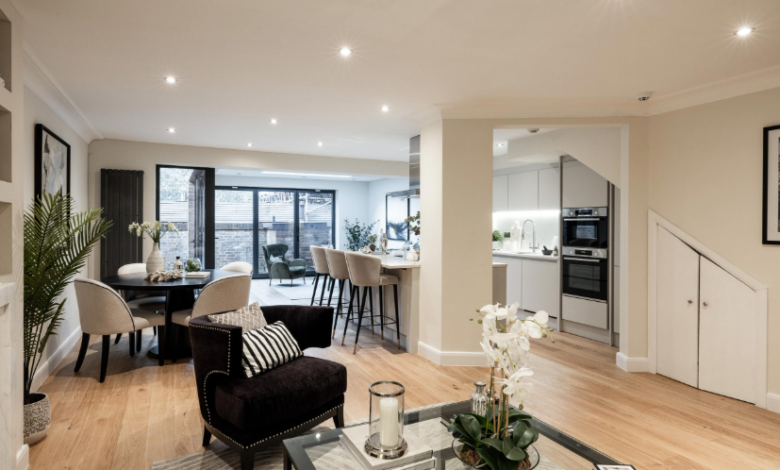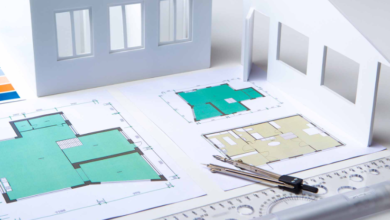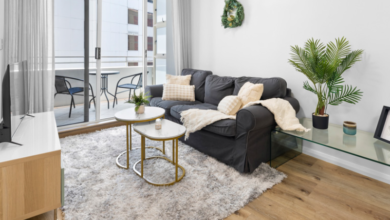Architects in London: A Helpful Guide for Homeowners

Choosing an architect for your home project is one of the bigger decisions you’ll make. You’re hiring someone to understand your vision, navigate London’s planning rules, and oversee work that affects your house for decades. It’s not like hiring a plumber for a one off job. You’re entering a relationship that lasts months or longer.
Understanding what architects actually do for homeowners, or learning how to pick the right one for your specific project, helps you make a choice you won’t regret. If you want to know more about how architects handle planning permission in London, or understand what makes Extension Architecture different from other firms, you’ll see why taking time with this decision matters. Most homeowners haven’t worked with architects before. That’s fine. You just need to understand what you’re looking for.
What an Architect Can Do for Your Home Plans
An architect isn’t just someone who draws pretty pictures. Though that’s part of it. An architect understands how buildings actually work. How to solve problems. How to make spaces function properly.
When you’re adding an extension, converting a loft, or doing a full renovation, an architect brings expertise that contractors don’t have. They look at your space and your needs and figure out the best way to solve them.
They handle design. They handle Planning Permission applications. They handle Building Regulations compliance. They coordinate with engineers if structural work is needed. They’re basically the project quarterback. Everything flows through them.
For a loft conversion, an architect figures out whether it even qualifies for Permitted Development. They design the layout under the roof constraints. They make sure it works structurally and functionally. They handle all the approvals.
For an extension, an architect designs something that actually fits your property. Not just adds square footage but adds it in a way that makes sense for your home and neighborhood.
They also manage expectations. They tell you upfront what’s realistic. What will take time. What will cost money. You’re not surprised later.
How to Pick the Best Architect for a London Property
Start by looking at what they’ve actually done. Not just renderings. Real projects. Finished homes. Before and after photos.
Ask yourself if their work appeals to you. Do their designs feel right? Do their buildings look like they belong in their locations? Or do they look generic?
Then check their experience with your specific type of project. Have they done loft conversions? Extensions? Renovations? You want someone who’s done the type of work you need multiple times.
Also ask about London specifically. London has unique planning rules. Conservation Areas. Listed buildings. Building Regulations variations by borough. You want an architect that knows London well, not someone who does generic work nationwide.
References matter too. Ask the architect for past clients you can actually call. Don’t just read testimonials on their website. Talk to people who’ve actually worked with them.
Ask those clients direct questions. Did the architect listen to your ideas or just do their own thing? Were they easy to work with? Did they handle problems well? Would you hire them again?
Location matters too. If your architect is in central London, they probably have higher fees than someone in the outer zones. That might be worth it if they’re specialized. Or it might not be. Consider what you’re paying for.
See also: Affordable Light Filtering Curtain Options for Homeowners
Why Many Homeowners Work With Extension Architecture
Extension Architecture has been doing this work for a long time. They’ve built a reputation doing extensions, lofts, and renovations across London.
They understand the design side. They don’t just design functional spaces. They design spaces that fit your property. That make sense architecturally. That look intentional.
They understand the practical side too. Planning permission. Building Regulations. The work of actually getting projects approved and built. They’ve navigated these systems enough times to do it efficiently.
They also take time with clients. They listen. They ask questions. They make sure they understand what you actually need, not just what you think you need.
That approach takes longer upfront but it means the final design actually works for you. You’re not paying for something you don’t want.
Planning Rules and Design Challenges in London Homes
London planning is complicated. Different rules in different areas. Conservation Areas have stricter rules. Listed buildings have even stricter rules. Some areas have Article 4 Directions that remove Permitted Development rights.
An architect needs to understand all this. They need to know which projects need Planning Permission. Which ones might qualify for Permitted Development. What each borough’s planning committee typically approves or rejects.
They also need to design accordingly. A house in a Conservation Area can’t have the same extension as a house in a regular residential area. The design needs to respect the character of the area.
Design challenges in London are real. You probably don’t have tons of space. Your neighbor’s house is close. You can’t just build whatever you want. You have to work within constraints.
A good architect uses these constraints creatively. They design something that works within the limitations. Something that makes sense for your specific property.
Costs, Timelines, and What to Expect During the Process
An architect’s fees vary. Some charge hourly. Some charge a percentage of the project cost. Some charge flat fees for specific deliverables.
On average, architectural fees for residential projects run 10 to 15 percent of the construction cost. For a 50,000 project, that might be 5,000 to 7,500 in fees. For a 100,000 project, 10,000 to 15,000.
Timeline depends on the project. A loft conversion with Permitted Development might take 4 to 6 months total. An extension needing Planning Permission might take 6 to 9 months. A full renovation could take a year or more.
Much of that time is waiting for approvals, not actual design or construction. Planning Permission can take 8 to 12 weeks. Building Regulations doesn’t happen instantly either.
During the process, you’ll go through phases. Initial consultation where the architect understands your needs. Design phase where options get explored. Detailed design phase where everything gets specified. Then construction administration where the architect oversees the actual building work.
Each phase takes time. Each phase requires your input and decision making. The architect can’t move forward without you making choices about design and finishes.
Costs during construction sometimes surprise people. An architect’s job includes site visits and inspections. Some architects charge for this. Some include it in their fees. Get clarity upfront on what’s included.
Also understand that construction often costs more than initially estimated. Unexpected issues come up. Materials cost more than budgeted. A contingency of 10 percent is realistic for most projects.
An good architect manages expectations about this. They tell you upfront that surprises happen. They help you plan contingency into your budget.





